On the occasion of the 180th anniversary of his birth, playwright Gergely Csiky was remembered at his renovated tomb in the Fiumei Road Cemetery. The complete reconstruction of the tomb, protected since 2001, was carried out by the National Heritage Institute (NÖRI) within the framework of the annual renovation of the National Cemetery, with the support of the Government of Hungary, at a cost of nearly 1 million HUF - read the NÖRI press release sent to Pestbuda.
In his speech, András Pataki, the Deputy State Secretary responsible for art and community education at the Ministry of Culture and Innovation, emphasised that walking in the Fiumei Road Cemetery, one realises how much history lives with us. He added: Gergely Csiky's plays are currently performed in several theatres, and the theatre named after him was handed over with his play after the renovation - so Gergely Csiky's art is by no means obsolete.
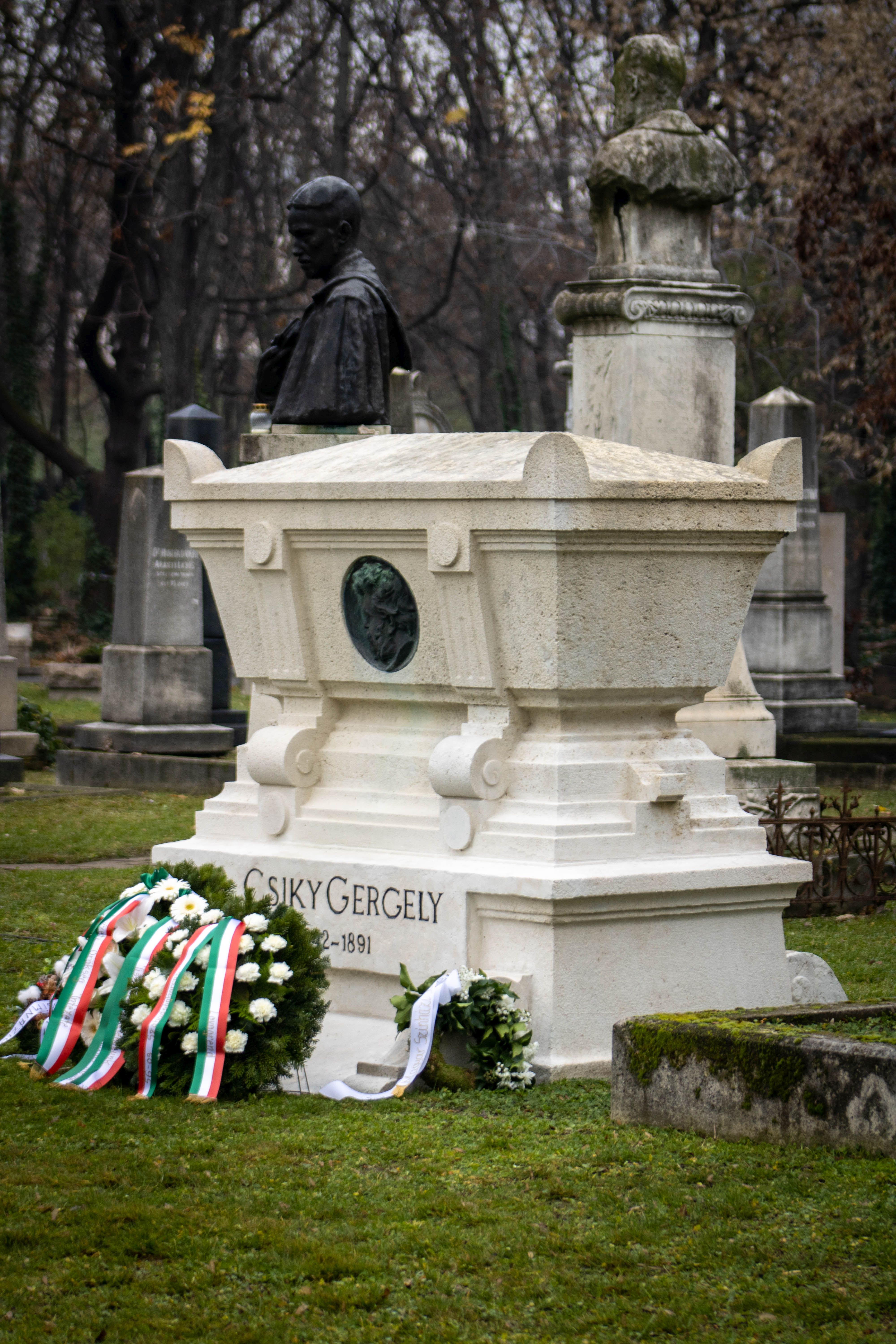
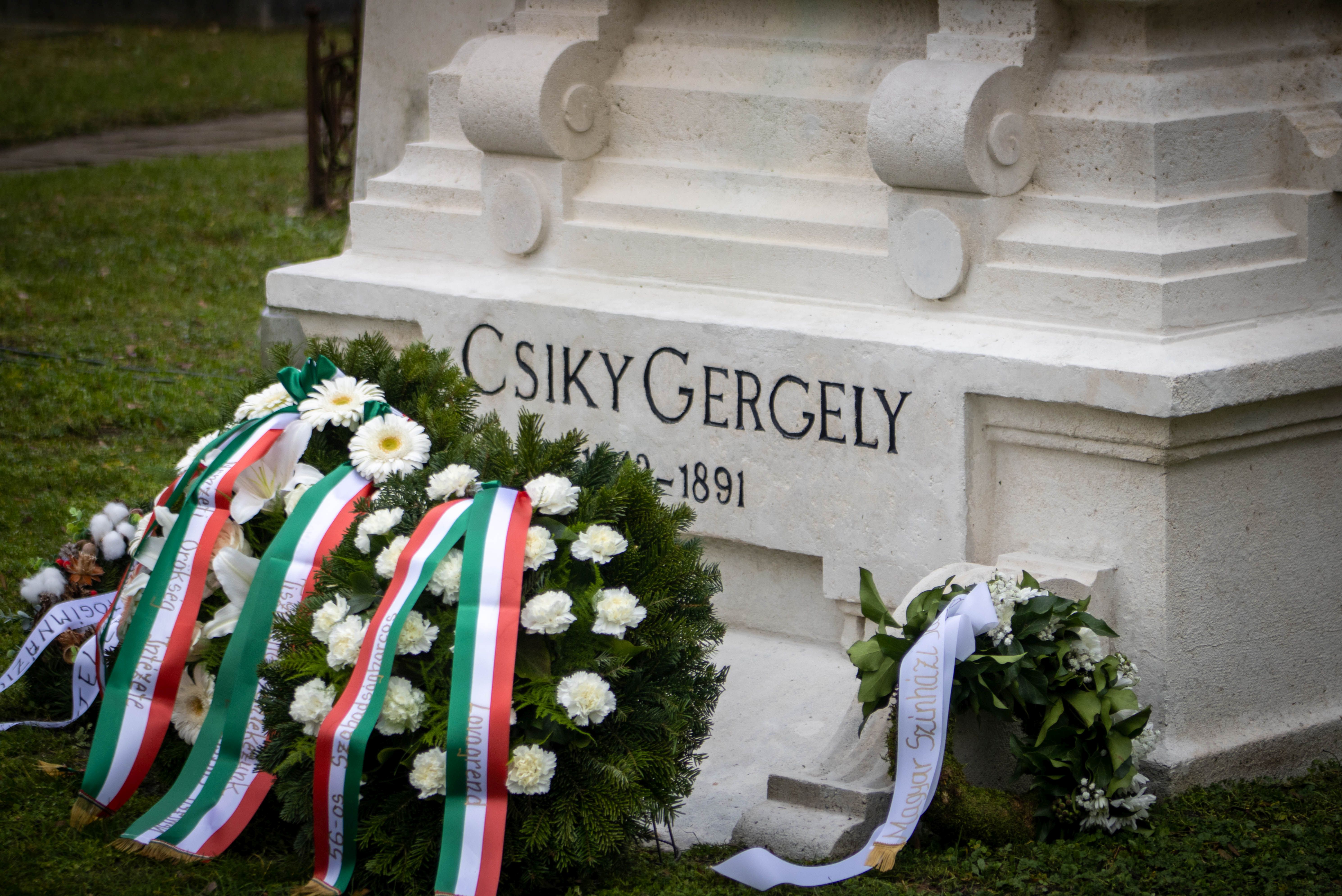
Gergely Csiky's tombstone was renovated at a cost of nearly 1 million HUF (Photo: National Heritage Institute)
"In his art, we find the kind of sacredness that can be found in humans, and with which Gergely Csiky tried to make his environment better. We too have to experience and realise this mission. We think of good examples as history, but this is not the case, these examples live with us, and the values created by the people resting in the cemetery on Fiumei Road can determine our future. There is no future for a nation that has no past, and we Hungarians have a fantastic past," said the Deputy State Secretary.
"In his life and his death, he remained a central figure of Hungarian culture," said Gábor Móczár, Director General of the National Heritage Institute, in his greeting, referring to the location of Gergely Csiky's grave in the middle of the artist's plot of the Fiumei Road Cemetery, surrounded by famous contemporaries and colleagues such as Gyula Reviczky, Ede Paulay or Ede Szigligeti.
"The intention of the National Heritage Institute is to make the Fiumei Road Cemetery a scene of today's cultural life," the Director General drew a parallel between the playwright's work and the cultural role of the institute. "That's why we organise poetry theatre, theatre, literary concerts, extraordinary literature classes, thematic walks, and why we started our National Memorial Pedagogy Program, which helps high school students process their visits to national or historical memorial sites with creative group work," he explained.
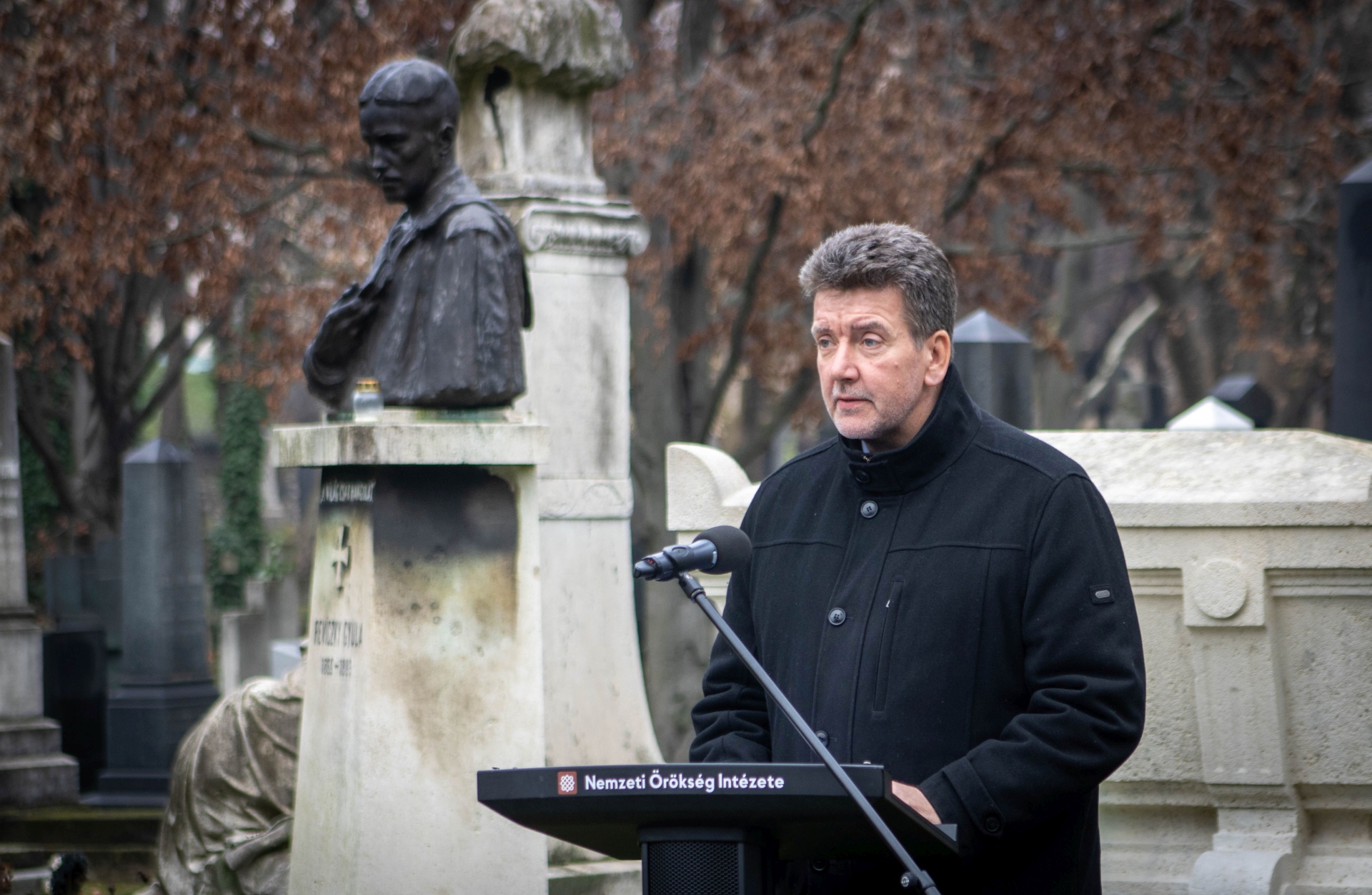
Gábor Móczár, Director General of the National Heritage Institute (Photo: National Heritage Institute)
"The theatre was his world, the element of his existence, without which he could not live. And we preserve his memory with the institutions named after him, with his plays performed ever since, which have withstood the test of time. Our task is to keep this world for the next generations so that Gergely Csiky's name does not mean just a stone theatre for them, but concrete theatre experiences," concluded the Director General.
The Neo-Baroque decorative sarcophagus made by Károly Senyei, located in one of the artist's plots of the Fiumei Road Cemetery, renovated at a cost of nearly 1 million HUF, shows a bronze inlay on the sides, which depicts a relief portrait of Gergely Csiky, as well as a cross carved in limestone, which refers to church service. Gergely Csiky, the creator of the Hungarian bourgeois drama, was preparing to become a priest, and after his ordination, he held important church offices, but from the 1870s onwards, his increasing success on the stage led him to a crossroads.
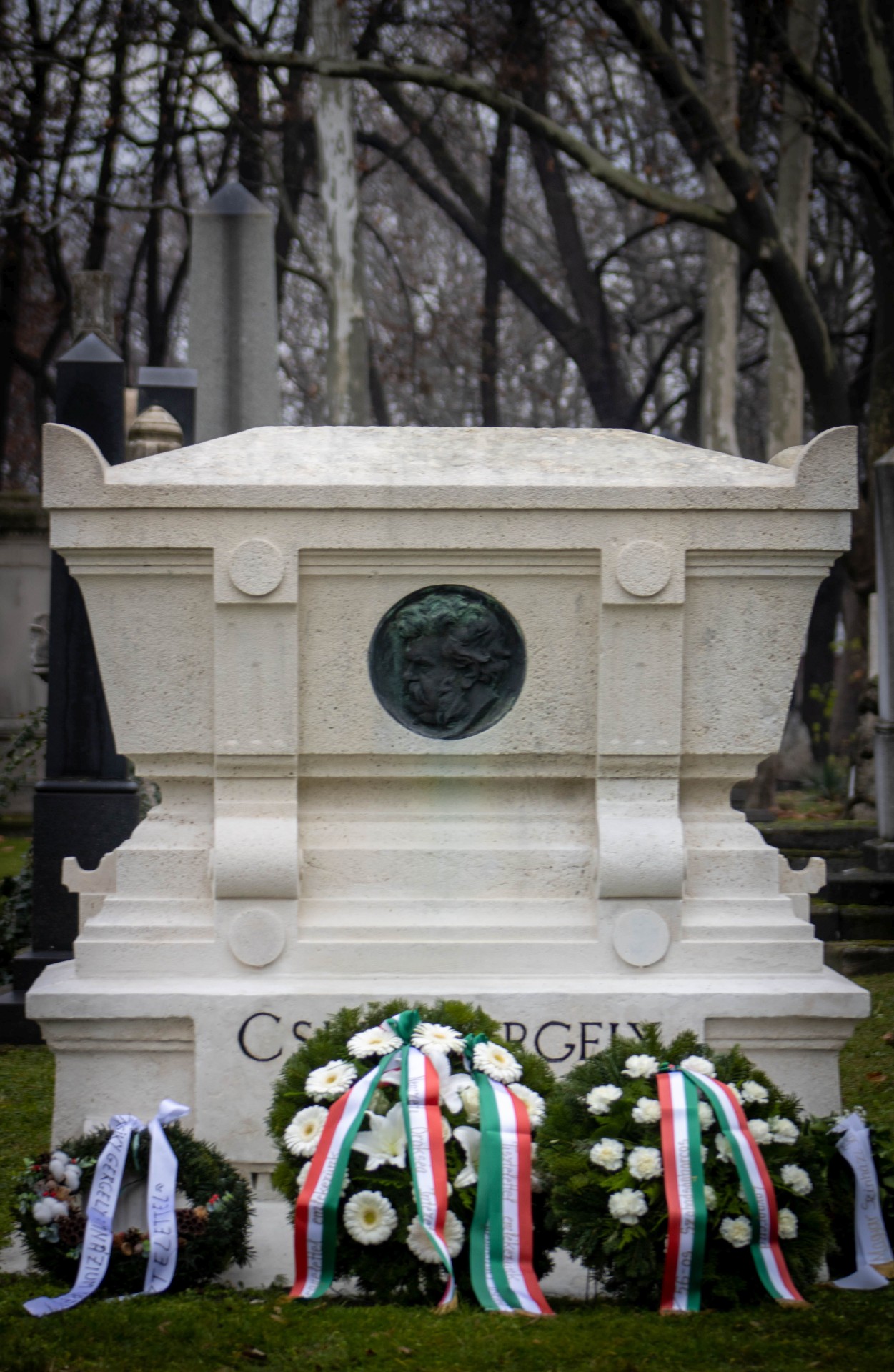
Playwright Gergely Csiky was born 180 years ago (Photo: National Heritage Institute)
Leaving his priestly vocation, he became more and more recognised in literary life. He produced a series of plays, of which perhaps the best-known is The Grandmother [A nagymama], which is still widely played today. He was the second secretary of the Kisfaludy Society and a corresponding member of the Hungarian Academy of Sciences. He had a heart condition from a young age, worked a lot and was a heavy smoker. He died at the age of just forty-nine, during lunch, with a knife and fork in hand. Today, the Gergely Csiky Theatre in Kaposvár, the Gergely Csiky Hungarian State Theatre in Temesvár (Timișoara, Romania) and the Gergely Csiky High School in Arad (Romania) bear his name.
Source: National Heritage Institute
Cover photo: Gergely Csiky's renewed grave monument in the artist's plot of the Fiumei Road Cemetery (Photo: National Heritage Institute)

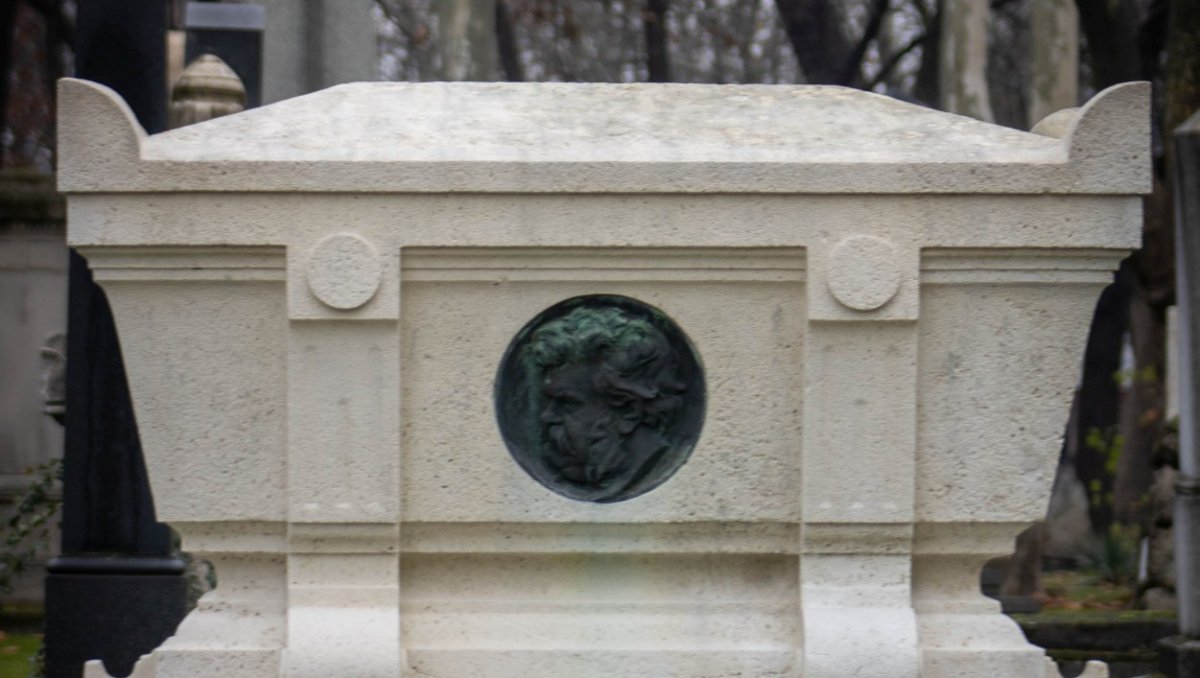




































Hozzászólások
Log in or register to comment!
Login Registration